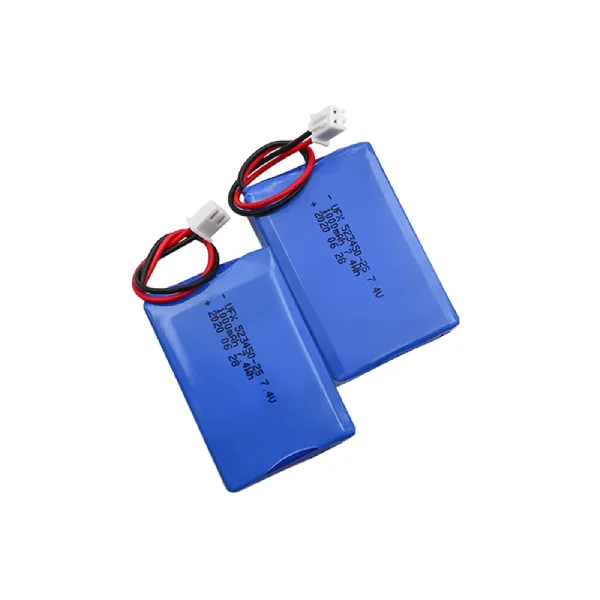Lithium battery is a high-energy-density battery that is widely used in mobile electronic devices, electric vehicles, and energy storage systems. Proper assembly and use of lithium batteries is key to ensuring their safety and performance. Let’s learn together the assembly methods and precautions for lithium batteries.

Part 1. How to build lithium battery pack?

1. Prepare materials and tools
The following materials and tools are required to assemble the lithium battery pack.
a. Lithium battery cell: Choose the appropriate lithium battery cell according to your needs. Common ones include lithium-ion batteries, lithium polymer batteries, etc.
b. Protection circuit board: used to monitor and protect parameters such as voltage, temperature and current of lithium batteries.
c. Wire: used to connect the lithium battery cell and the protective circuit board (PCB).
d. Battery clamp: used to fix the lithium battery cell and protect the circuit board.
e. Battery pack shell: used to fix and protect the lithium battery pack.
2. Check the materials
Before assembling the lithium battery pack, you need to check whether the lithium battery cell and the protective circuit board are intact and ensure that their specifications and parameters meet the requirements.
Pay special attention to parameters such as the capacity, voltage, and maximum charge and discharge current of the lithium battery cell to ensure that it is suitable for the required application scenarios.
3. Connect the battery protection circuit board
Connect the battery protection circuit board to the lithium battery cell to ensure a secure connection. And make the correct connections according to the pins of the circuit board.
Generally speaking, the protection circuit board will have positive and negative pins marked. It needs to be connected correspondingly to the positive and negative poles of the lithium battery cell.
4. Fix the protective circuit board
Use tape or other fixing methods to secure the protective circuit board to the lithium battery cell. This prevents it from loosening or shifting. Make sure there is no metal contact between the protective circuit board and the lithium battery cell to avoid short circuit or other safety issues.
5. Connect the wires
If necessary, connect the wires to the positive and negative terminals on the protective circuit board, making sure the connections are secure. Use soldering or other suitable connection methods to ensure that the connection resistance between the wires and the pins of the protective circuit board is as low as possible.
6. Assemble the lithium battery pack
Place the assembled lithium battery cells into the battery pack case. and secure as needed. Ensure proper spacing between lithium battery cells to dissipate heat and prevent short circuits.
Part 2. Lithium battery assembly tips
1. Prevent excessive charging and discharging
Excessive charging and discharging of lithium batteries can cause battery performance to degrade or even be damaged. Therefore, when using lithium batteries, excessive charging and discharging should be avoided. This can be achieved by reasonably setting the charge and discharge voltage range and using protective circuit boards.
2. Avoid overheating
Overheating of lithium batteries can cause safety hazards and even cause fires and explosions. Therefore, when using lithium batteries, overcharging, over-discharging and long-term high-load use should be avoided. to control the battery temperature within a safe range.
3. Avoid short circuit
A short circuit in a lithium battery can cause excessive current, causing fire and explosion. Therefore, when assembling and using a lithium battery pack, avoid bringing metal objects or conductive objects into contact with the positive and negative electrodes of the lithium battery to avoid short circuits.
4. Prevent vibration and shock
Lithium batteries should be protected from severe vibration and external impact during assembly and use to avoid damaging the battery structure and performance. In applications such as mobile equipment and electric vehicles, suitable securing and cushioning measures should be taken.
5. Pay attention to storage conditions
Lithium batteries that are not used for a long time should be stored in a dry, ventilated environment with a suitable temperature. Avoid excessively high or low temperatures and humidity.
6. Handle exceptions
When abnormal conditions occur in lithium batteries, such as heat, smoke, leakage, etc., stop using them immediately. and handle it properly. Do not discard or dispose of abnormal lithium batteries at will. They should be disposed of in accordance with relevant regulations to avoid causing safety accidents.
Part 3. Lithium battery parameters
1. Capacity
The capacity of a lithium battery represents its ability to store and release electrical energy. The unit is ampere-hour (Ah). The larger the capacity, the more energy the battery can store and the longer it can be used.
2. Voltage
The voltage of a lithium battery represents the potential difference between its positive and negative electrodes. The unit is volt (V). Different types of lithium batteries have different nominal voltages. Common ones are 3.6V, 3.7V, 7.2V, etc.
3. Maximum charge and discharge current
The maximum charge and discharge current of a lithium battery indicates the maximum current that the battery can continuously supply. The unit is Ampere (A). Exceeding the maximum charge and discharge current will cause battery overheating and damage.
4. Cycle life
The cycle life of a lithium battery indicates the number of charge and discharge cycles that the battery can perform. Usually 80% capacity retention rate is standard. The higher the cycle life, the longer the battery will last.
5. Self-discharge rate
The self-discharge rate of a lithium battery indicates how quickly the battery discharges itself when not in use. The unit is percentage. The lower the self-discharge rate, the less capacity the battery loses when not used for a long time.
The assembly and use of lithium batteries requires careful operation and compliance with relevant safety regulations. When assembling, pay attention to the selection and quality of materials to ensure a solid connection and reliable fixation. When using, avoid excessive charging and discharging, overheating and short circuit to ensure the safety and performance of lithium batteries. At the same time, knowing and understanding the various parameters of lithium batteries can help us correctly select and use lithium batteries to meet different application needs.
Related Tags:
More Articles

Overview of Deep Cycle Lithium Battery
In this article, we explore the life, voltage, capacity, and charging considerations of deep cycle lithium batteries.
How Long do Lithium Batteries Last?
How long do lithium batteries last? we will explore the factors that influence the lifespan of lithium batteries and provide insights into their longevity.
How to Choose the Best LiFePO4 Battery?
Choose LiFePO4 batteries for superior performance, safety, and versatility in EVs, UPS, and backup power. This guide helps you make informed decisions.
Get 12v Lithium Car Battery As a Power Source for the Ride
Make the right choice for your vehicle's battery needs by installing a 12 volt lithium car battery. You will enjoy maintenance-free longevity with this change.
Everything About A Small Lithium Ion Battery
Discover the features, uses & future potential of a small lithium ion battery. A compact and tiny powerhouse ideal for smartphones, wearables, drones & more.





